Funded researchers: Dr. Selma Siew Li Bidlingmaier, Dr. Peter Sebastian Bachler, Dr. Nils Jäkel, Dr. Beate Knauer & Dr. Katharina Reglinski
Dr. Selma Siew Li Bidlingmaier
Philology
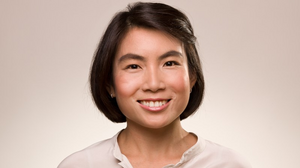
The rise in rent and the dwindling number of affordable housing in cities such as New York have often been attributed to the urban trend of ‘gentrification’. While studies of the processes of gentrification have provided us interesting insights into the cultural and economic changes of New York City’s urbanscape, it is an incomplete story that neglects a crucial historical perspective. My postdoctoral project traces New York City’s current housing crisis back to the Progressive Movement at the turn of the 20th century. I argue that public policies related to urban planning and urban reform from the Progressive Movement to the New Deal were heavily influenced by ideas of Social Darwinism and Eugenics, creating a system of meritocracy that favored the development of city districts populated by the ‘fit’ gentry—upper, middle classes, while systematically weeding out ‘unfit’ areas with populations that were considered undesirable and unproductive. The legacies of these urban policies have left indelible marks on poor neighborhoods in the Bronx and Brooklyn and have continued to have detrimental effects on the economic mobility and the social fabric of these communities. As New York today continues its course of rapid urban change replacing lived communities with new ‘sanitized’ zones of a globalized economy, this project aims to unveil the redressing and reformulation of social darwinistic and eugenic paradigms in contemporary urban discourses and to explore alternatives to this meritocracy.
My work will contribute to a larger research project, Below the Grid, conducted by New York University’s Asian/Pacific/American Institute. Directed by the renowned cultural historian John Kuo Wei Tchen, the project explores the spatial redevelopment history of New York City from the formulation of the 1811 Grid through the height of the impact of explicit eugenic thinking on the everyday life and urban development of New York City.
Dr. Peter Sebastian Bachler
Physics and Astronomy
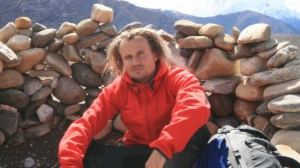
Cancer and HIV are two of the most prominent and lethal diseases affecting human beings. Unfortunately, neither their development nor their course is satisfactorily understood, till date. In this regard, the transmembrane-protein receptor CXCR4 is of crucial pharmaceutical relevance as it is not only an important co-receptor for the entry of HI-viruses into cells, but it is the main chemokine receptor that contributes to the metastasis of most cancers within the body.Specific ligands (ions, peptides, proteins) can bind to CXCR4’s extracellular surface and subsequently might either stimulate or repress the receptor’s signaling activity.
Importantly, CXCR4’s activity strongly affects the development as well as the course of cancer and HIV. So far, little is known of the mechanistic link between the chemical structure of a ligand and its influence on the activity of CXCR4. My goal is to highlight this relation. For this, I will apply single-molecule fluorescence spectroscopy to identify real-time structural transitions of CXCR4 in response to pharmacologically distinct ligands in a native-like environment (phospholipid nanodiscs).
My host is Prof. Dr. David Millar from The Scripps Research Institute (TSRI) in San Diego. He is a globally recognized expert in the field of fluorescence spectroscopy. Further, my project will actively be supported by several experts from TSRI and the University of California in San Diego (UCSD). Decisively, TSRI and UCSD both are among the global top 30 research institutes (ranked by the Nature Publishing Group, 2013). Further, in 2012, Thomson Reuters named TSRI as number one worldwide in Chemistry, as well as second in Microbiology in regard of scientific impact. Thanks to Research School Plus, I will be able to integrate myself into this exceptional research environment.
Dr. Nils Jäkel
Philology
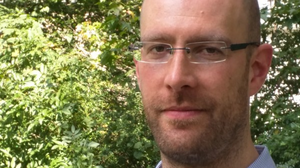
Teacher and student dispositions, in particular self-efficacy, have been shown to impact the quality of classroom teaching as well as students’ achievements. Studies have investigated the relationship of academic achievement with individual students’ background variables and involved a plethora of psychological constructs. In contrast, teacher dispositions and their effects on successful learning in class have long been neglected despite the gatekeeper role educators hold. Recent studies have focused predominantly on mathematics and science subjects while the development of arts (e.g., languages) teachers has received little attention.
The aim of my GF project is to investigate associations of English teachers’ dispositions and their behavioral manifestations with individual students’ dispositions and academic achievement. In order to investigate potentially universal versus education-system specific associations between teachers’ and students’ dispositions, the study will be set up as a cross-cultural comparison between the US and Germany. Data collection will involve a mixed-methods approach. Both qualitative and quantitative data will be collected from future teachers and experienced in-service teachers.
As part of the GF project I will be cooperating with Prof. Dr. Judson Laughter, Department of the Theory and Practice of Teacher Education at the University of Tennessee in Knoxville (USA) and Michael Rogge, teacher trainer (Fachleiter) in Gelsenkirchen.
Dr. Beate Knauer
Neuroscience
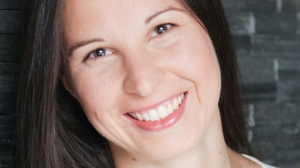
Despite recognition of the claustrum as a distinct brain area more than 200 years ago, its function remains unclear. With his research, Dr. David Reser tests the hypothesis that the claustrum may modulate activity in resting state functional networks. Resting state functional networks are different sets of synchronously active brain regions whereby the individual areas of each set are widely distributed across the cortex. These functionally, but not necessarily anatomically, connected areas are synchronized while the subject is not focusing its attention to a specific task.
My Gateway fellowship project will be conducted in the Department of Physiology at Monash University in Melbourne, Australia, in the laboratory group of Professor Marcello Rosa . Monash University leads the Centre of Excellence for the Integrative Brain Function of the Australian Research Council and is an outstanding place for neuroscientific research.
At Monash University, I will learn neuroanatomical and connectomic techniques. In detail, I will be taught tract tracing techniques, fluorescence microscopy, 2-D and 3-D image mapping, and graph theoretical analysis in the midst of scientists that are highly experiences in these methods. With a set of already available anatomical data and the data generated by me, I will investigate the claustrum's organization and its projections. In one particular project I will explore the claustrum's connection to the cingulate cortex across the adult life span of common marmoset monkeys.
In addition, I may support Dr. Reser's laboratory with my in vitro electrophysiology competency. Thereby, I will also be given the chance to extend my experience with in vitro electrophysiology to cell types in a brain area of an animal species other than those that I have studied so far.
The gateway fellowship provides me with the opportunity to strengthen my present expertise, to learn new techniques and thereby to deepen and broaden my methodological spectrum. The gateway fellowship furthermore allows me to set my foot in the door of claustrum research which is a large-scale change compared to the hippocampal research that I have been doing during my MSc and PhD studies. Taken together, I will use the gateway fellowship to create a strong base to structure compelling grant applications for a 2-year post-doc period outside Germany.
Dr. Katharina Reglinski
Biology and Biotechnology
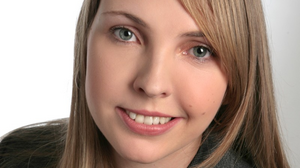
Peroxisomes are less known but still fascinating organelles, essential to the cellular functions. Many steps of various catabolic and anabolic pathways take place in peroxisomes, which makes them crucial for human health. The proteins needed for these different metabolic pathways have to be imported into peroxisomes from the cellular cytosol. This import follows a unique mechanism which is still hardly understood. What is known is that these proteins are synthesized in the cytosol and bind to cytosolic import receptors, which transport and import them into the peroxisomes by becoming an integral part of the peroxisomal membrane, thereby forming a transient translocation pore. This unique import system is very interesting as it allows the import of complete protein complexes which is like the transport of the “camel through the eye of a needle”.
Unfortunate drawbacks in previous studies of peroxisomal protein import were limitations in observation methods. While techniques such as optical fluorescence microscopy allowed studies on living cells and therefore highlighting potential changes in the organization and dynamics of fluorescently labeled peroxisomal proteins, its spatial resolution has been limited to 200nm. This is roughly the size of the peroxisomes in mammalian cells and therefore not sufficient to resolve peroxisomal sub-structures (such as the pore). A remedy to this is recently developed super-resolution optical fluorescence microscopy such as STED microscopy, which features a spatial resolution of down to below 50nm in live-cell imaging. These techniques are currently revolutionizing our way of investigating the cell, a fact which has been recognized by last year’s Nobel Prize in Chemistry.
The aim of my Gateway fellowship is to use such super-resolution microscopy approaches to reveal a more detailed picture of the peroxisomal import process. For this, I will join the group of Prof. Eggeling in the MRC Human Immunology Unit at the Weatherall Institute of Molecular Medicine of the University of Oxford, United Kingdom. Prof. Eggeling has for many years played an important role in one of the Nobel Laureates labs, now having built up a strong infrastructure on advanced super-resolution microscopy in a biomedical-focused institute, optimizing these techniques for cellular research. I plan to observe the spatial organization and temporal dynamics of the different components of the peroxisomal protein import pathway with so far unprecedented detail, thus shedding new light on the understanding of the mechanisms of this transport process. In addition, Baker’s yeast will be established as a model system for imaging, as here number and size of peroxisomes can be modified easily, giving additional possibilities to decipher aspects of the transport process.
The fellowship gives me the opportunity to extend my knowhow in cellular biology and peroxisomal research, especially on the potential and aspects of applying novel and cutting-edge technology.
- Forschungsbezogene Kompetenzen: Workshops & Veranstaltungen
- Karrierevorbereitung: Workshops & Veranstaltungen
- Forschungsmanagement Skills: Workshops & Veranstaltungen
- Liste aller Workshops & Veranstaltungen
- Förderprogramme zur Internationalisierung
- Beratung & Ombudsperson
- Promovierenden-Datenbank
- Welcome Hour
- Newsletter


